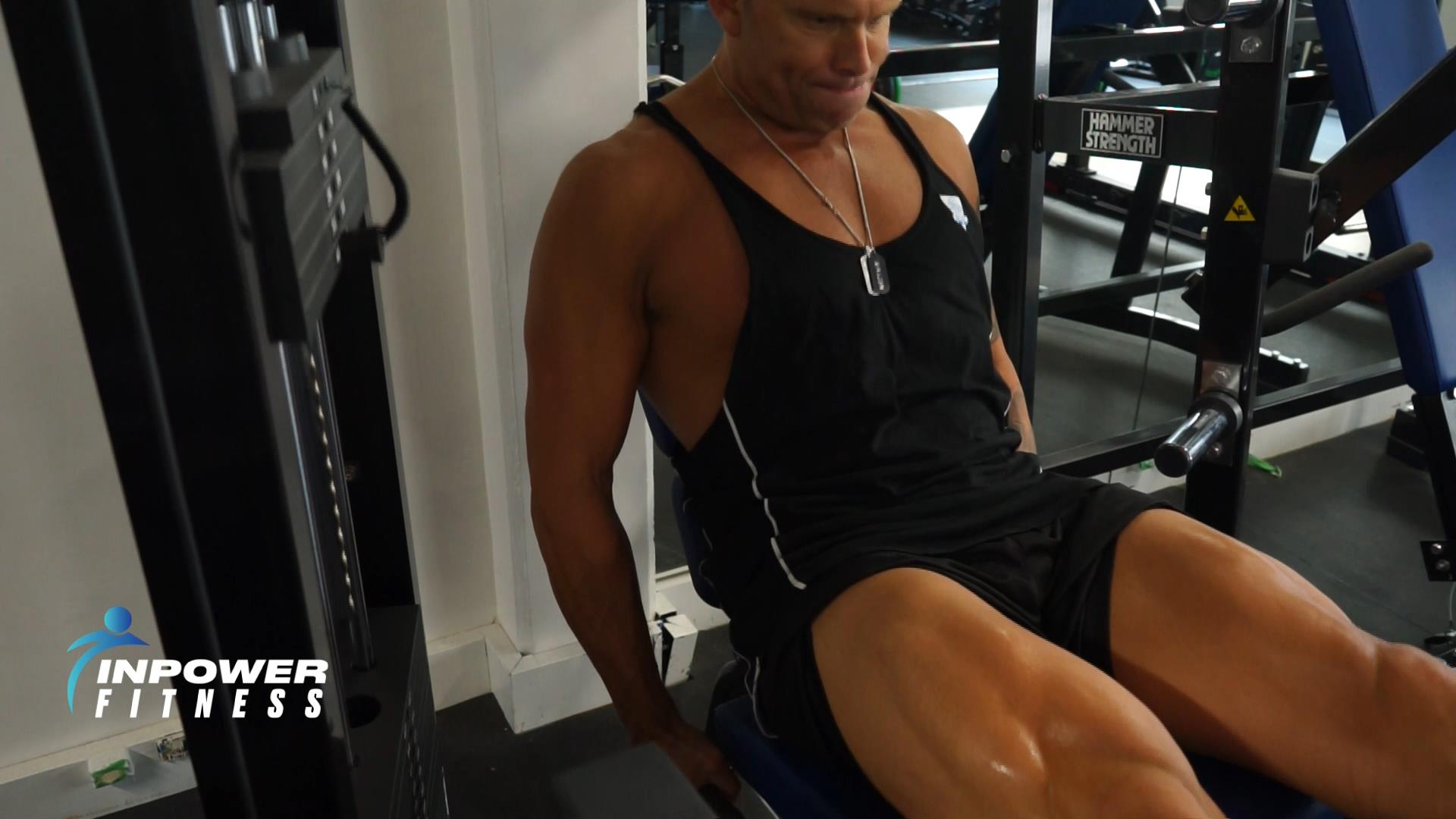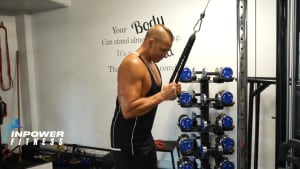
Personal Training using Circuits
One system of muscle building that rarely gets its well-deserved attention is circuit training. About 50 years ago, this method of muscle training was seen in high schools and practiced in jungle gyms with various stations. Personal Trainers weren’t really using this method. It was more for strength coaches.
A more recent application of weight training circuits are the sections to the back of the commercial gym, where senior citizens can engage in a half-hour of general fitness without pulling muscles or suffering fatigue and usually without a personal trainer. But if you are looking for a way to pack on slabs of brute force, you should probably consider a different training regimen.
But before we cast aside circuit training,
let’s take a moment to examine this impressive method of training so that we can better understand its unique benefits and limitations.
Circuit Training Was born
It all began in 1895, with some experts in the field of exercise physiology working at the University of Leeds in England. They introduced the term “Circuit Training” to describe their program that combined strength training and endurance training in a single workout. At that time this had never been done before as these two types of exercise had generally been kept separate.
Typically personal trainers used to do this by taking a strength training routine one day and the endurance training the next day. For example, Monday, Wednesday and Friday you would endurance train by running. Tuesday, Thursday and Saturday you do calisthenics, gymnastics or weight lifting. Sunday would be for rest. Another approach could be training twice a day, endurance training in the morning and strength training in the evening.
But circuit training went in a completely new direction offering the best of both training routines. To give more detail to the account, strength training had a “station” training element which involved completing all the reps for a single exercise before moving to the next “station”. This is still the preferred training method for sports weightlifting.
The snatch and clean and jerk are the Olympic weightlifting events. The very nature of these lifts and the competition requires that all sets of a single exercise are completed before moving on to another set of exercises. So, In a workout for example, you would not alternate between snatches and clean and jerks, because the techniques involved in these exercises are very different. This is not to say that such a thing can’t be accomplished, but you would probably not reach your maximum capacity alternating in this fashion.
In the station training format, 2 – 4 minutes of rest are taken between sets, more for strength and less for hypertrophy. This means that a total body workout can take as long as an hour. Personal trainers would usually have their Elite weightlifters and powerlifters take longer rests between their reps and will use especially heavy weights. It is not uncommon for their entire workout routine to last longer than a couple hours.
What is Circuit Training?
Circuit training is not the same. A single set of exercises are completed before the set is completed, there can be ten or more exercises depending on the specific goals of the routine. In our personal training sessions we will use a circuit format of 4-5 exercises at various parts of the routine depending on the format. It may be to complement the heavy lifts done previously or it can be a metabolic finisher using compound movements to increase overload. In this type of workout, less time is needed to rest between exercises. We will use a rest period of somewhere between 15 to 20 seconds. However in our one on one personal training when strength or hypertrophy is the goal we will extend those rest periods to still be able to recruit the correct muscle fibers. In this type of routine different muscle groups are engaged in conjunction, in a push/pull sequence or upper lower sequence. In a future article we will explain German body composition. This is a format we will use for our endurance and weight loss clients. The literature that supports German body composition is next to none in regards the the goals of endurance and fat loss. This type of organization increases the efficiency of the routine allowing you to accomplish more in less time. This also makes them a little more challenging from the standpoint of a cardio program. This is also a great format we tend to use in our group training sessions. We can dedicate certain machines to clients and follow a sequence of upper then lower body machines to ramp up the heart rate and muscle building.
In the time it takes a weightlifter to perform 15 sets of snatches, 15 sets of circuit training workouts can be completed twice. This is a far more appealing option for modern personal trainers who often only have the time to complete their exercise routine in an hour. This is something that many gyms will announce in their publicity materials.
What are the Downsides to Circuit Training
But there is a considerable downside to circuit training. This is the fact that low training volume of exercises and failure to reach the point of exhaustion is not an effective way to increase strength or build mass. Furthermore, the breaks taken between the sets minimize any effective aerobic training. This means that if you have a goal of improved strength or greater fitness, you will need to accompany your routine with some other form of training. It should make you think again if a gym or personal trainer that you choose solely uses circuit training. You have to be using a combination of strength building exercises either before the circuit starts or on alternate days.
But for a beginner starting out on the path to greater fitness. Circuit training allows a great calibration of the systems. It also allows a less intimidating introduction to the gym environment. It is also a good way to return to the gym after a few months away from training or as a good break from the rigors of strength training.
Some Examples
Here are two examples of exercises that could be used in a circuit training workout. One will use free weights and the other will use machines. I will also demonstrate the way they should be sequenced. I am not saying that any of these workouts is any more than a decent way to engage the body. The progress any fitness enthusiast makes on their path to fitness depends on their commitment to practice. There is a video with sample exercies you can view here
Free Weights*
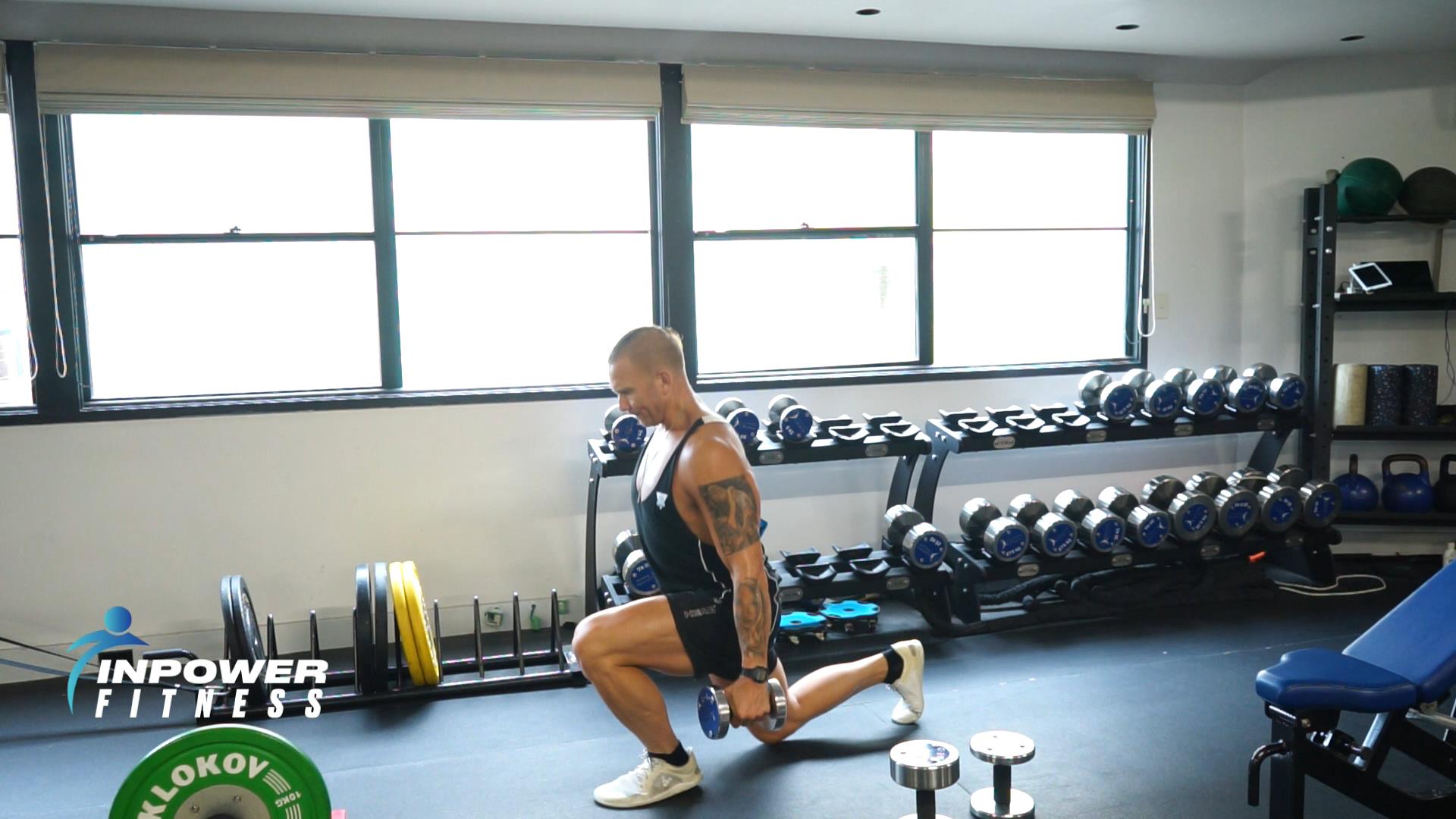
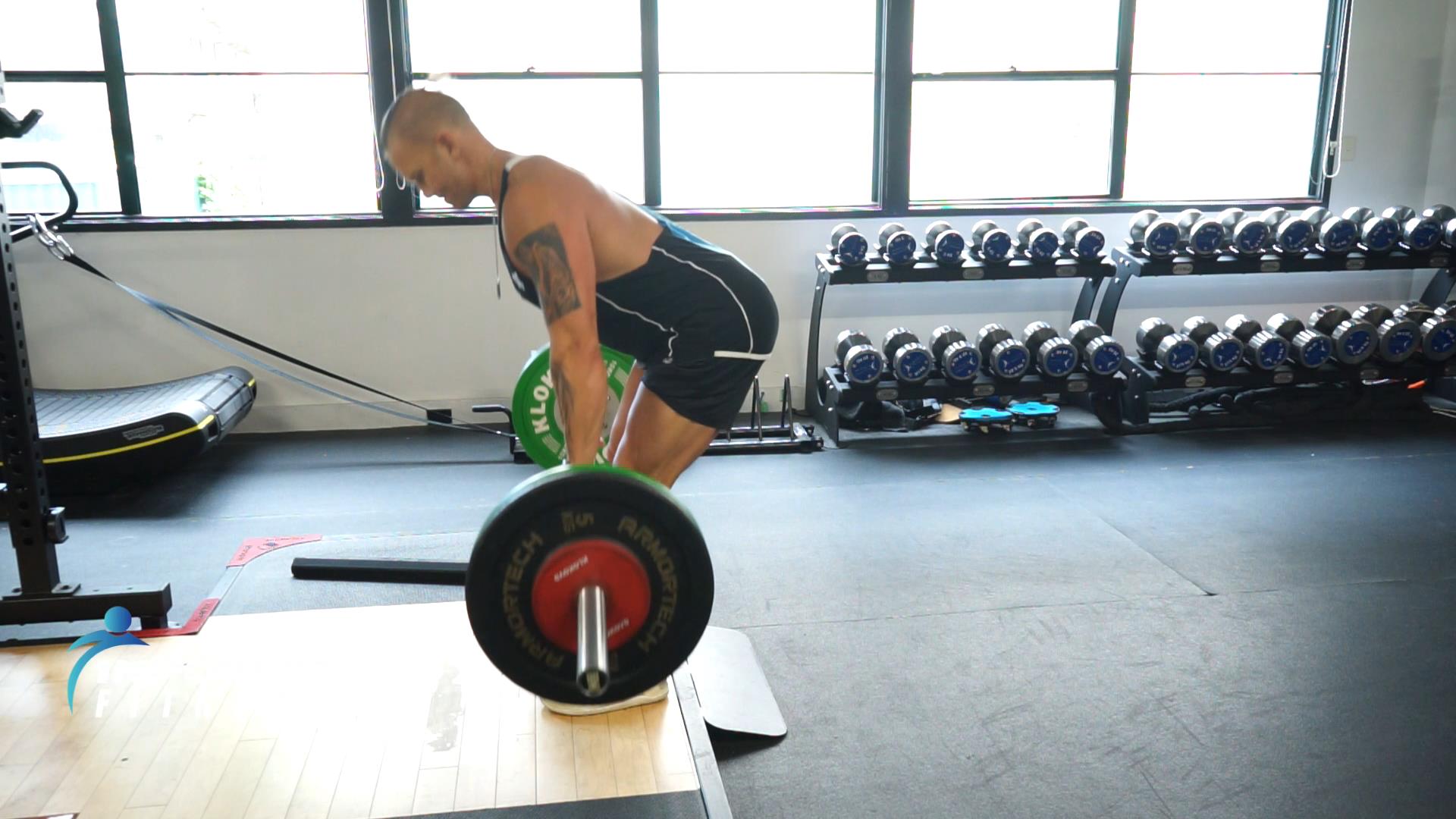
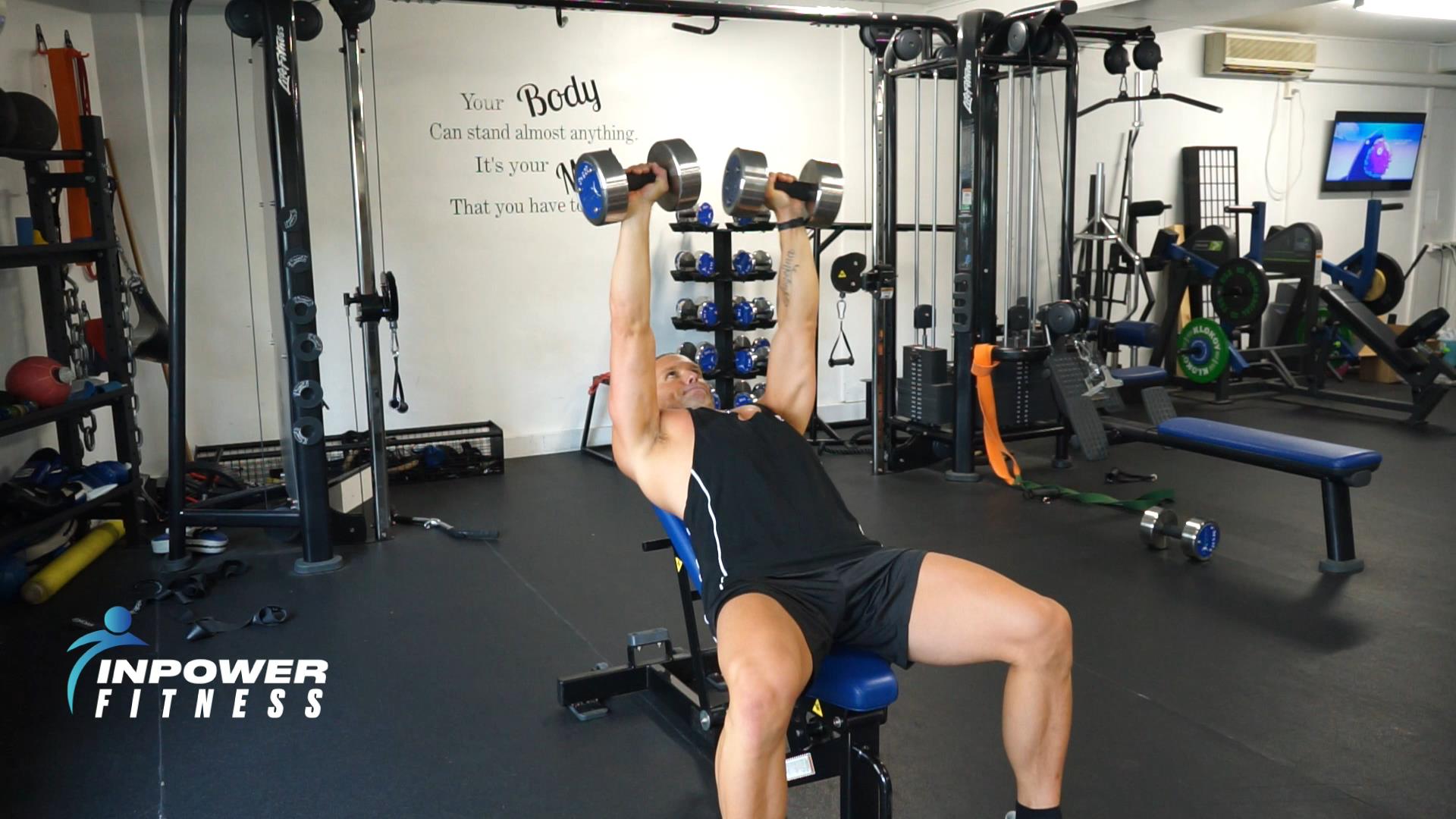
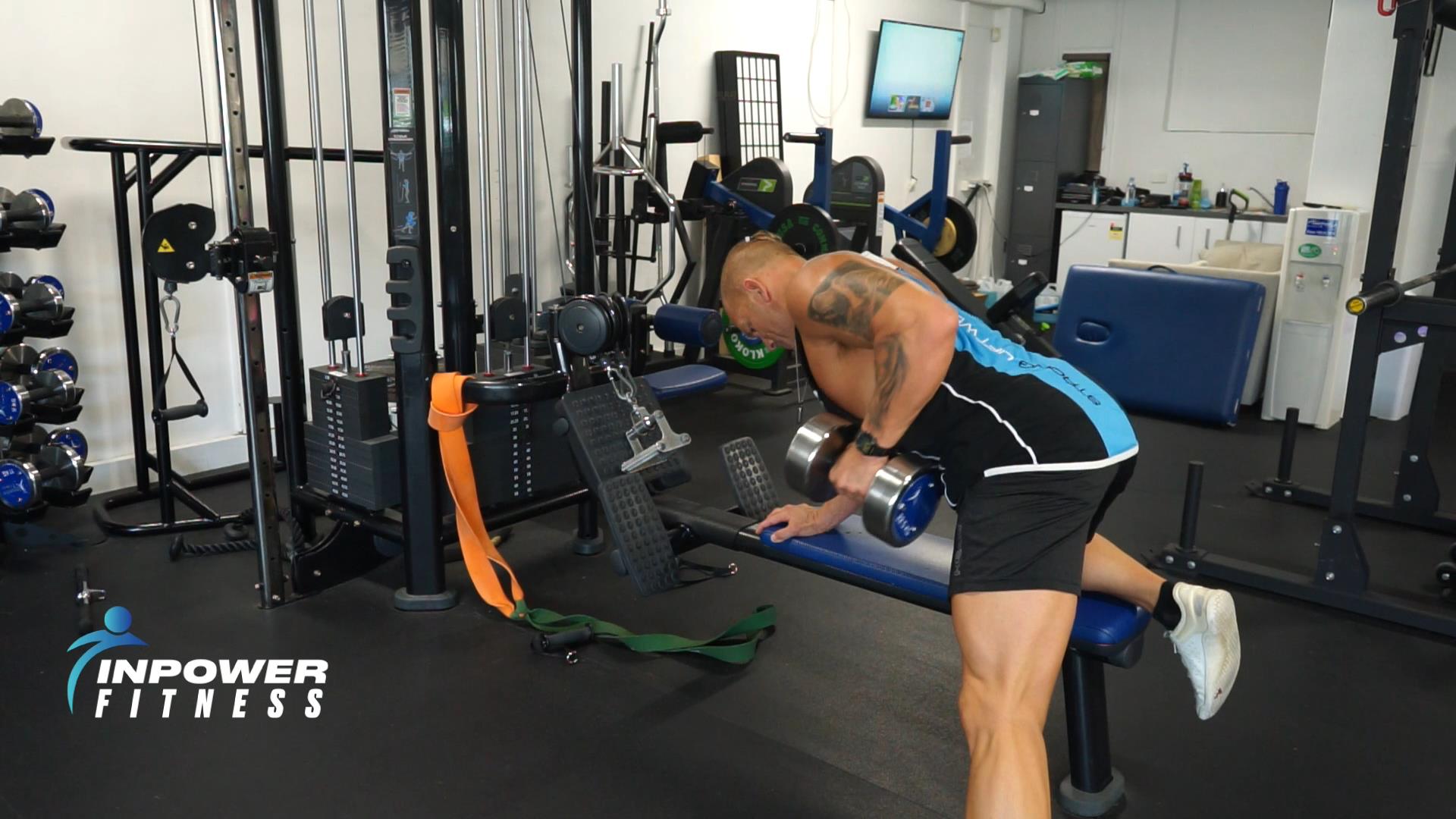
A. DB Split Squat
B. BB Straight-Leg Deadlift
C. DB Incline Press
D. Chin-up
E. DB Lateral Raise
F. DB Row
G. DB French Press
H. BB Biceps Curl
I. DB Calf Raise
J. Ab Crunch
Machines*

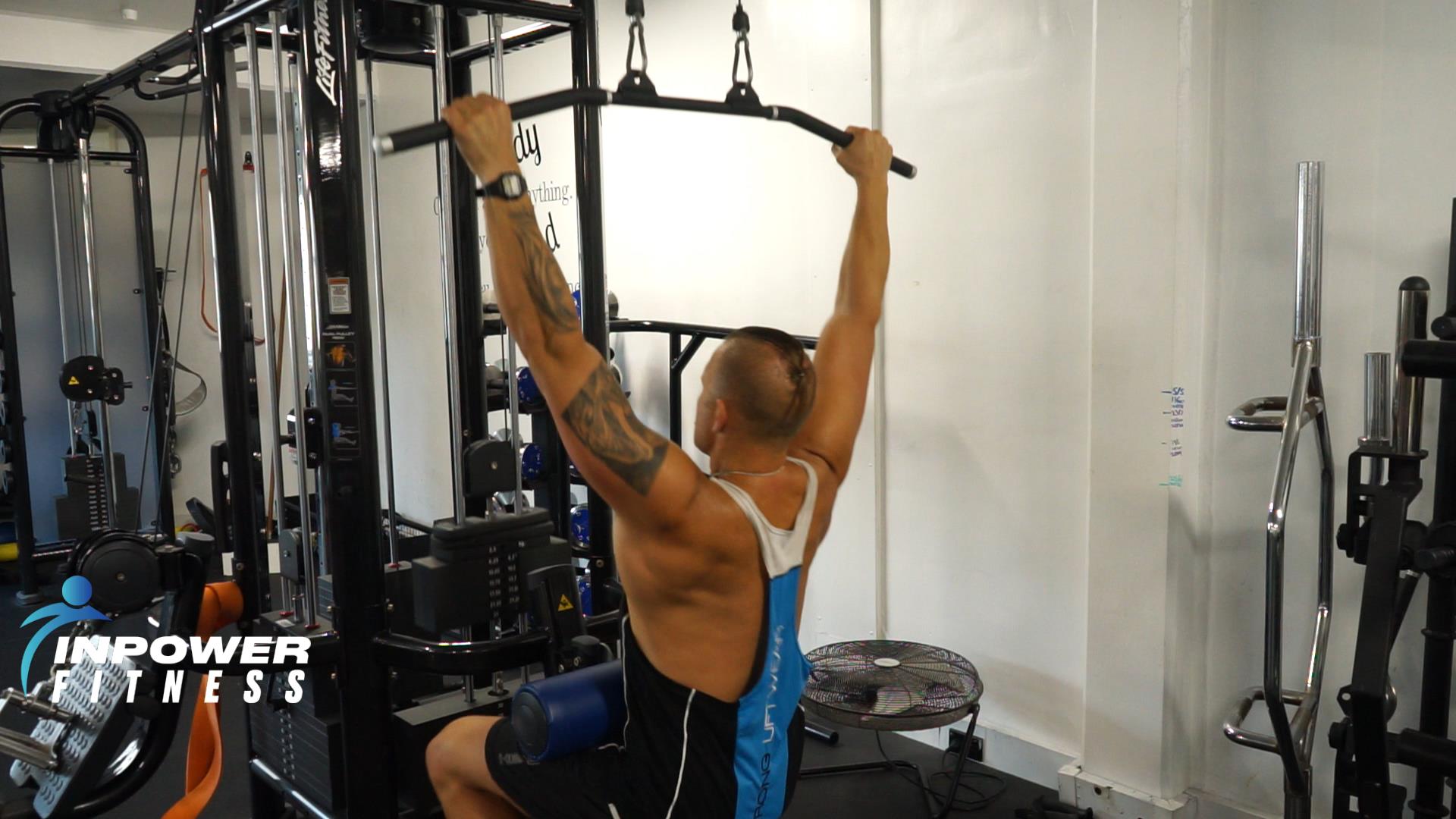
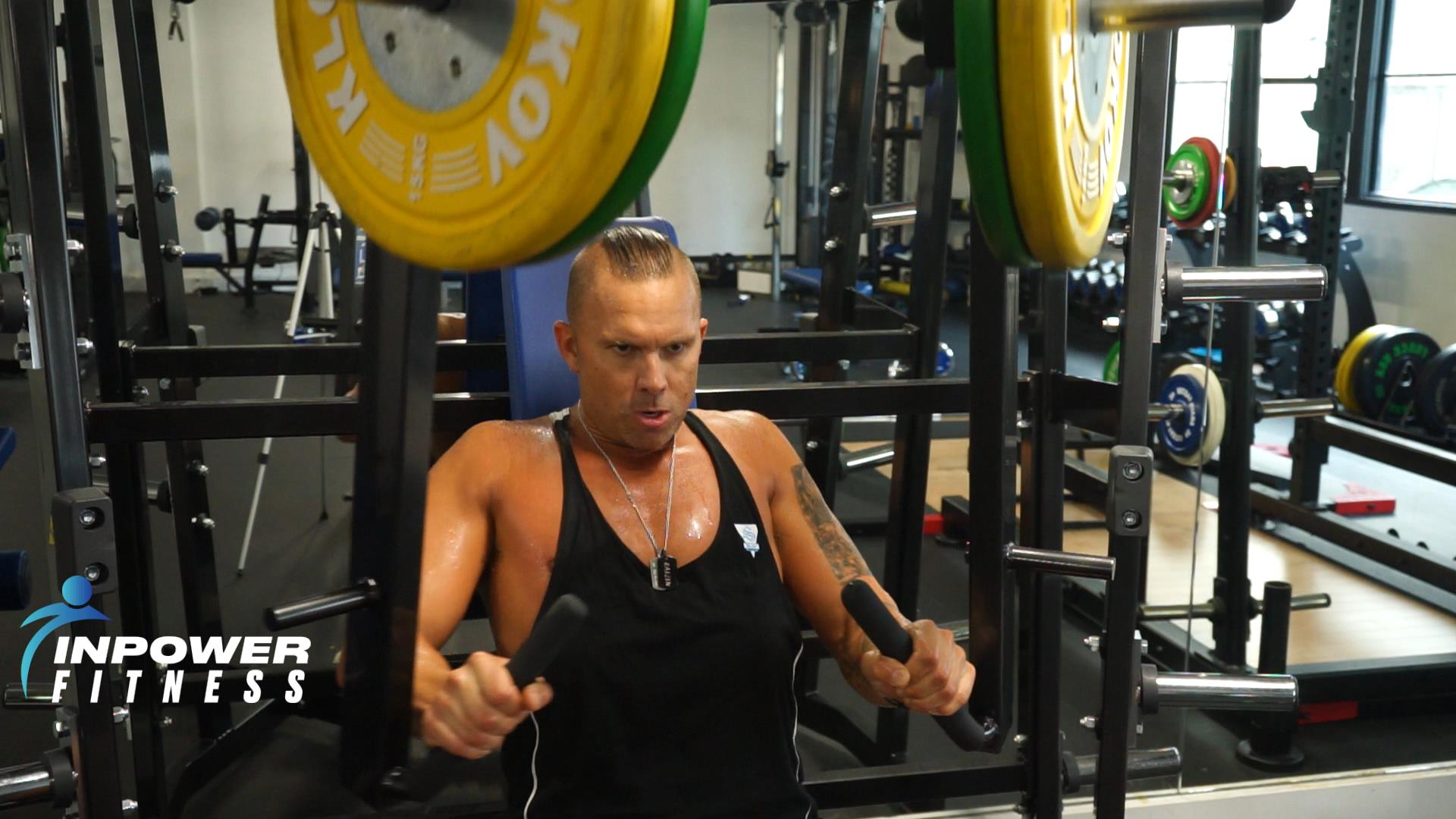
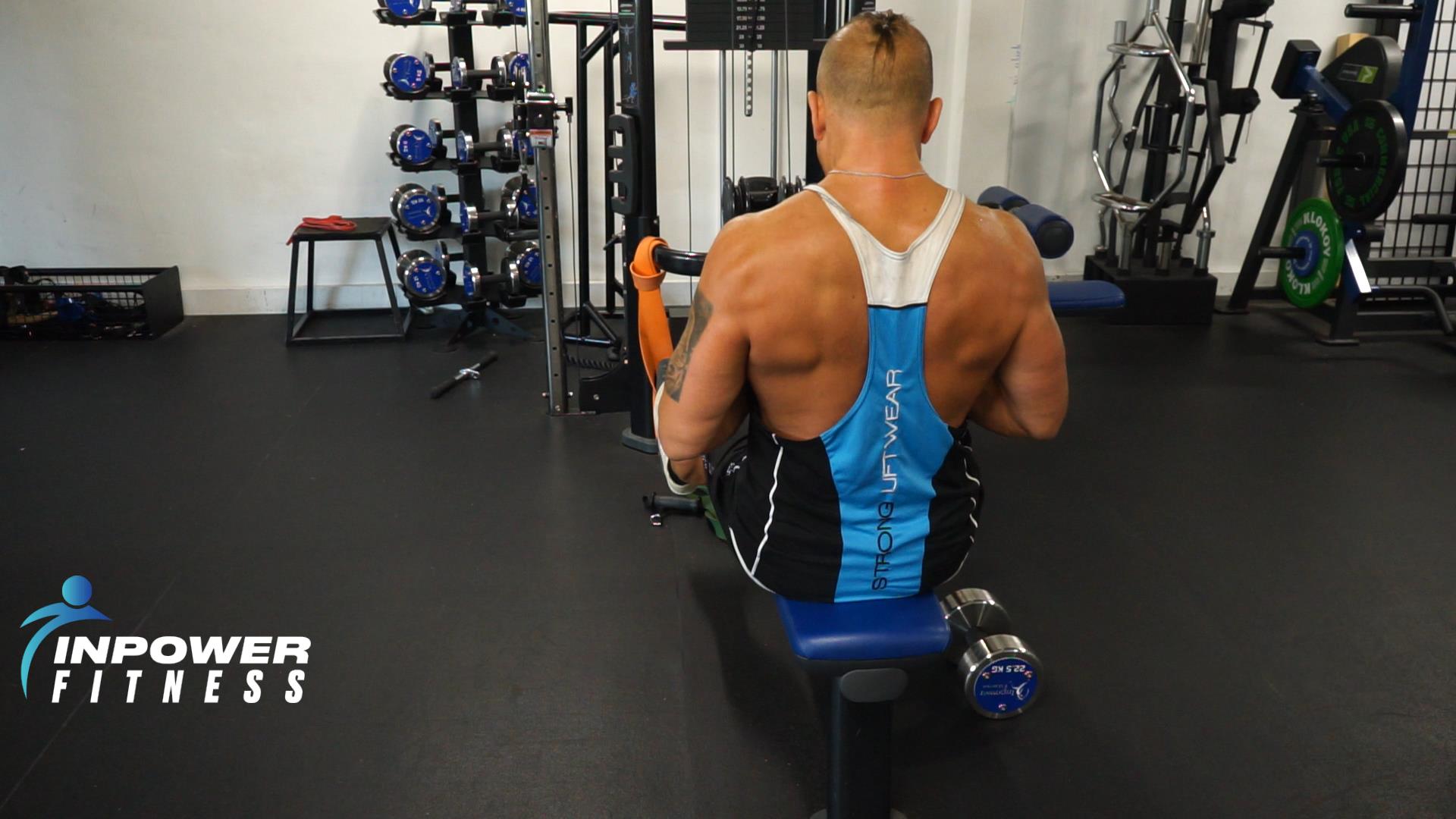
A. Leg Press B. Leg Curl
C. Pec Dec
D. Lat Pulldown
E. Lateral Raise Machine
F. Seated Row Machine
G. Rope Triceps Pressdown
H. Seated Curl Machine
I. Standing Calf Machine
J. Seated Ab Crunch Machine
You can watch a video of sample exercises from this circuit here.
You may have noticed an obvious flaw with this fitness routine. It would be very difficult to complete this routine in your average commercial gym. This is why many large commercial gyms will have specific areas dedicated to this type of training.
Try Small Circuits
One adjustment that can be made is to divide the traditional circuits into smaller more manageable circuits with only 3 – 5 exercises. Once the personal trainer has taken their clients through all the sets in the circuit, they can then move on to the next. Using the same exercises from our example, here is what these mini-circuits would look like.
Free Weights Machines
Mini-Circuit #1 — A
A. DB Split Squat
B. BB Straight-Leg Deadlift
C. DB Incline Press
D. Chin-up
E. DB Lateral Raise
Mini-Circuit #1 — B
A. Leg Press
B. Leg Curl
C. Pec Dec
D. Lat Pulldown
E. Lateral Raise Machine
Mini-Circuit #2 — A
A. DB Row
B. DB French Press
C. BB Biceps Curl
D. DB Calf Raise
E. Ab Crunch
Mini-Circuit #2 — B
A. Seated Row Machine
B. Rope Triceps Pressdown
C. Seated Curl Machine
D. Standing Calf Machine
E. Seated Ab Crunch Machine
But are these mini-circuits any more effective than a larger more traditional circuit? According to what we understand about the effectiveness of super sets — which is the combination of two different sets — and tri sets — the combination of three exercises— it is safe to assume the answer is YES! This is one of our favourite personal training programs for efficiency and muscle fiber recruitment.
Circuit Science
Let’s take a look at this highly credible study on this topic that supports my opinion.
As you can see, combining your sets into tri-sets and supersets is a more acceptable plan for most commercial gyms.
The Tri-Set Advantage
Tri-sets and supersets are some of my favorite methods of training. This will come as a surprise to many serious lifters who are reluctant to apply these methods because they think they are not as effective as other methods of strength building and hypertrophy. In my opinion, this is not the case. With the exception of training for Olympic lifts, I believe that anyone could benefit from these effective training routines.
Here is a study that demonstrates the effectiveness of tri-sets in comparison with traditional station training.
“Similarity in Adaptations to [title] High-Resistance Circuit vs. Traditional [title] Strength Training in
[title] Resistance-Trained Men.”
Pedro E. Alcaraz, [title] Jorge Perez-Gomez, Manuel [title] Chavarrias, and
Anthony J. Blazevich. Journal [title] of Strength and Conditioning [title] Research. 2011 Sep 25(9):
2519-2527.
The study followed the progress of 33 test subjects with an average age of 22. Each of these test subjects had been lifting weight for at least a full year before the study began. None of the study participants had any medical conditions or were suffering from any injuries that would have impacted their capacity to perform in the tests being made. Furthermore, each of these tests subjects was capable of producing “force equal to twice their body mass when performing the isometric squat”
The subjects were then divided into three groups. The first group was placed into a “station” training routine and group two did tri-sets. The third group was the control group and did no lifting at all. Body composition and conditions were tested before and after the study. Before the study began the groups were placed on a week-long introductory workout. Both groups carried out the exact same sets of exercises that included bench presses, preacher curls, half squats, leg curls, standing calf raises and lat pulldowns among others.
The traditional training group did the exercises in this order
Leg curl
bench press
standing calf raises
lat pulldowns
half squat
preacher curls
Why they chose to include squats as the second-to-last exercise, I will never know. We can only assume that these researchers did not subscribe to Fitness Magazines or exercised themselves
For the tri-set group, their exercises went as follows
leg curls
bench press
standing calf raises
Followed by a second series:
Pulldowns
Half squat
Preacher curls.
The traditional strength training group completed three sets of exercise with three-minute breaks between each set and then a 5-minute break before continuing to the next circuit. The tri-set team performed 3 exercises in each circuit, taking 35-seconds to rest between the sets and then a 5-minute break between moving on to the next set. The final section of the exercises was performed the same as the first.
Originally, there was going to be 6 reps of 6 sets, but the researchers figured this was a bit too much and opted for 3 sets per exercise for the first week of training. More reps were added until by the 4th week, the complete 6 sets and 6 reps were being completed.
Results:
The final results showed that the tri-set team and traditional strength team were equally effective in increasing 1RM, shuttle-run performance, peak power and lean mass.
However, it was also noted that the tri-set group experienced a considerable reduction in body fat, something the traditional strength training team did not see.
The time investment was another advantage that the tri-set team enjoyed. During the first week of training, the tri-set team only needed 55 minutes to complete their exercise routine. It took the traditional strength training team a full 105 minutes to complete theirs.
Bottom Line:
The tri-set team achieved better results and invested only about a third of the time in training compared to the other teams. I believe that traditional circuit training is still an effective method of getting fit especially for beginners and returning athletes.
This all adds to the point that the system of carefully designed progressive overload is something that a personal trainer should be including in their programs as seen in the results of this study

